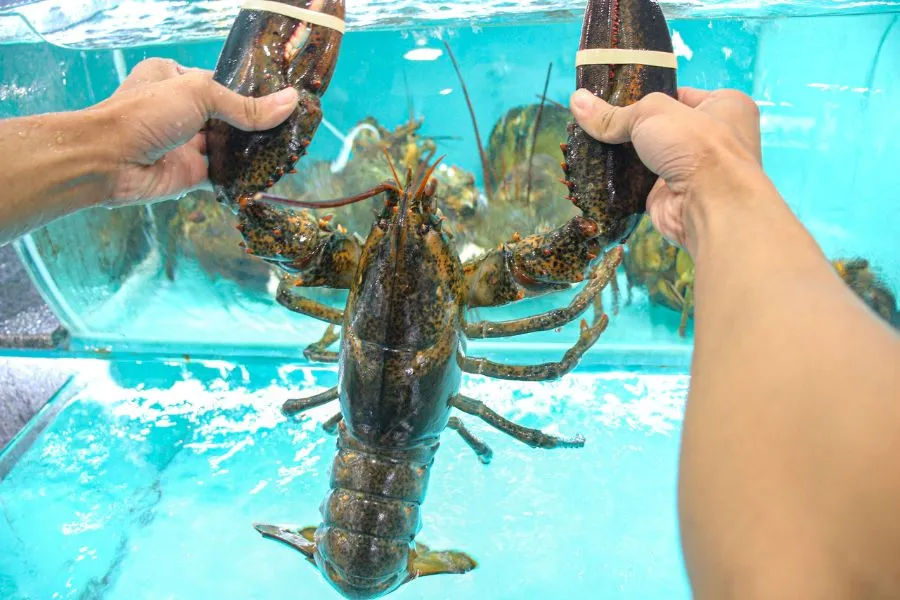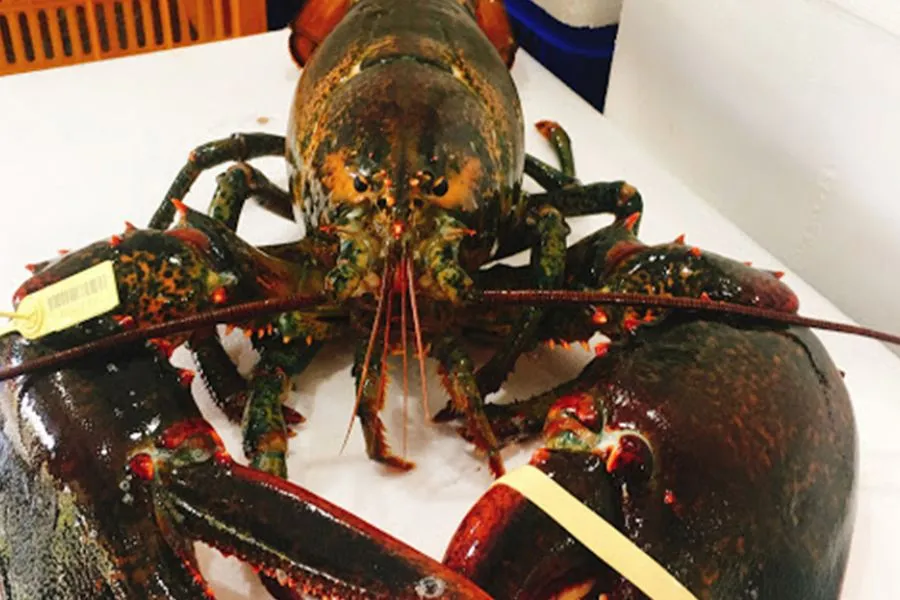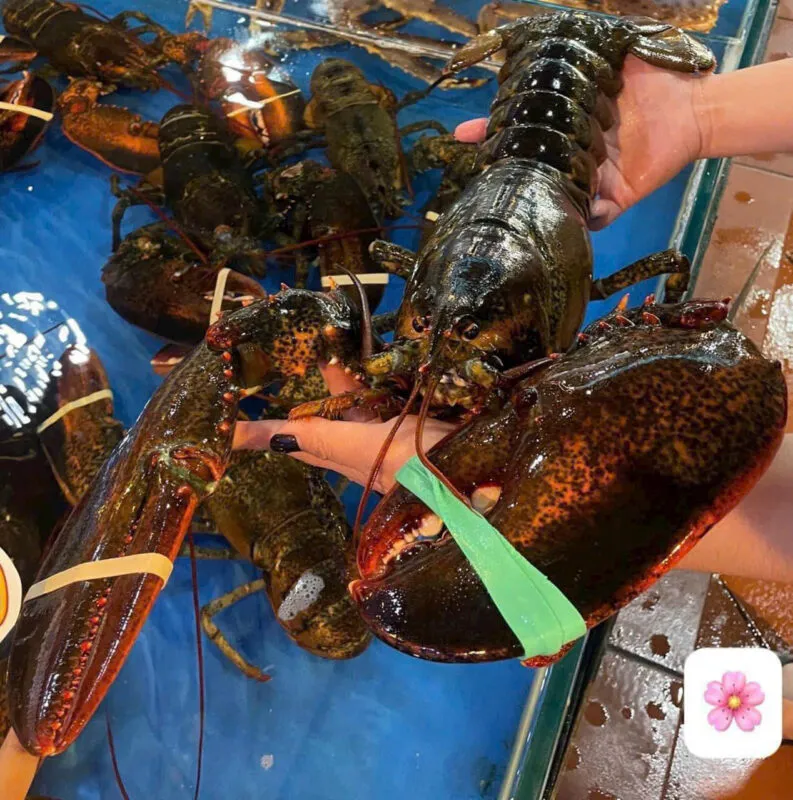Alaska, a land of magnificent natural wonders, is renowned not only for its icy mountain ranges and majestic glaciers but also as one of the most seafood-rich regions on the planet. Its unique geographical location, bordering the Arctic and Pacific Oceans, endows Alaska with an incredibly diverse and abundant marine ecosystem, creating a plentiful supply of high-quality seafood that contributes to its global culinary reputation.
So, what makes Alaska’s seas so exceptionally fertile? Let’s explore the secrets hidden beneath the cold waters with “Du lịch khắp thế gian” (Travel the Globe), discovering the famous seafood varieties and the sea areas that have built Alaska’s “seafood granary” brand.
Why is Alaska Sea Called “Seafood Paradise”?
Alaska’s seafood richness is not a matter of random luck but the result of a perfect combination of unique natural factors:
Location and Ocean Currents
Alaska is situated at the intersection of the Arctic and Pacific Oceans, where cold and warm ocean currents converge. The cold North Pacific current brings nutrient-rich waters from the Arctic, while the warmer current from the south creates temperature and habitat diversity. This convergence creates ideal conditions for the growth of phytoplankton – the foundation of the marine food chain – thereby nurturing an incredibly rich marine ecosystem.
Cold, Oxygen-Rich Waters
Alaskan seawater is cold year-round, especially in northern areas like the Bering and Chukchi Seas. Low temperatures allow seawater to dissolve more oxygen, creating an ideal habitat for many cold-water seafood species such as salmon, cod, Alaska king crab, and many others.
Pristine, Unpolluted Marine Environment
With a sparse population and minimal impact from industrial activities, Alaska’s seas remain pristine and unpolluted. This helps minimize marine environmental pollution, allowing seafood to thrive and ensuring superior quality.
Effective Marine Management and Conservation Policies
The Alaskan government prioritizes the sustainable management and conservation of seafood resources. Strict regulations on harvesting and fishing, along with marine environmental protection measures, help maintain ecological balance and ensure a stable seafood supply for the future.
Top Seafood-Rich Seas in Alaska
Alaska boasts numerous sea areas famous for their abundant and high-quality seafood reserves. Here are some must-mention “coordinates” when it comes to Alaskan seafood:
Gulf of Alaska

The Gulf of Alaska is one of Alaska’s largest and richest sea areas, stretching from the Alaska Peninsula to the Alexander Archipelago. This region is renowned for its biodiversity and enormous seafood reserves, especially the world-famous Alaska King Crab.
Alaska King Crab, also known as red king crab, is one of the most valuable seafood delicacies in the gulf. With its enormous size, firm, sweet, flavorful, and nutritious meat, Alaska King Crab is not only a source of pride for Alaskans but also a sought-after dish worldwide.
Besides Alaska King Crab, the Gulf of Alaska is also home to many other valuable seafood species, such as:
- Salmon: The Gulf of Alaska is one of the world’s largest salmon fishing grounds, with many valuable species like Chinook, Sockeye, Coho, Pink, and Chum salmon.
- Cod: Alaska cod is famous for its white, firm, and delicious meat rich in omega-3 fatty acids, a popular ingredient in many international cuisines.
- Halibut: The Gulf of Alaska is also ideal for catching halibut, a fish with white, tender meat and a delicate flavor.
- Shrimp: Various shrimp species live in the Gulf of Alaska, providing a fresh and delicious shrimp supply to the market.
Bering Sea

The Bering Sea, located between Alaska and Russia, is one of the most important sea areas for Alaska’s fishing industry. With its vast area and harsh natural conditions, the Bering Sea is known as the “kingdom of king crab” and a leading cod fishing ground in the world.
Alaska King Crab accounts for the majority of seafood harvested in the Bering Sea. This sea area provides an ideal habitat for king crab to thrive, with a muddy sandy seabed, cold water, and abundant food sources. Annually, thousands of tons of Alaska King Crab are harvested from the Bering Sea, serving global consumption demands.
Besides king crab, the Bering Sea is also famous for:
- Pacific Cod: The Bering Sea is the largest Pacific cod fishing ground in the world. Cod production from the Bering Sea plays a crucial role in providing protein to the world.
- Herring: Bering Sea herring is also abundant and harvested for food and processing industries.
- Seals and Sea Lions: The Bering Sea is home to many marine mammals like seals and sea lions, contributing to the biodiversity of this sea area.
Aleutian Islands

The Aleutian Islands are a chain of volcanic islands extending southwest from the Alaska Peninsula, forming a natural boundary between the Pacific Ocean and the Bering Sea. The waters around the Aleutian Islands remain pristine, with minimal human impact, and are a haven for many rare seafood species.
Although seafood production in the Aleutian Islands is not as large as in the Gulf of Alaska or the Bering Sea, this area still has great potential and provides many distinctive seafood types, including:
- Rockfish: Aleutian rockfish is famous for its firm, sweet meat and rich flavor, often prepared grilled, in hotpots, or as sashimi.
- Mackerel: Aleutian mackerel is also an important seafood resource, caught and processed into various products.
- Shellfish: The Aleutian waters also have many shellfish species like clams, scallops, and snails, providing a diverse and abundant food source.
Enjoying Alaskan Seafood: A Unique Culinary Experience
Alaskan seafood is not only famous for its quality but also offers a unique culinary experience, reflecting the cultural identity and wild nature of this land. Whether you enjoy it in luxurious restaurants or prepare it yourself at home, Alaskan seafood always captivates the taste buds with its fresh, pure flavor and excellent nutritional value.
Some typical dishes from Alaskan seafood:
- Baked Alaska King Crab with Cheese: A classic dish that honors the sweet, rich flavor of Alaska King Crab combined with the creamy richness of cheese.
- Steamed King Crab: The simplest way to fully enjoy the natural deliciousness of Alaska King Crab.
- Pan-fried Alaskan Salmon: A dish that preserves the freshness, richness, and omega-3 content of Alaskan salmon.
- Alaskan Seafood Soup: A warm, flavorful soup rich in the taste of the sea, combining various fresh seafood.
- Alaskan Cod Sashimi: A refined Japanese dish showcasing the freshness and premium quality of Alaskan cod.
Traveling Alaska: Discovering “Seafood Paradise”
If you are a seafood lover and want to witness the “seafood paradise” of Alaska firsthand, plan a trip to this land. You can join island exploration tours, experience fishing and seafood harvesting, or simply enjoy fresh seafood at seaside restaurants.
Some suggested seafood tourism experiences in Alaska:
- Visit seafood processing plants: Learn about the processing and preservation of Alaskan seafood, from harvesting to reaching consumers.
- Attend seafood festivals: Experience the vibrant atmosphere of seafood festivals, enjoy local cuisine, and learn about coastal culture.
- Take a boat trip to see the sea and seafood: Admire the majestic beauty of the Alaskan sea and have the opportunity to observe wild marine animals.
- Enjoy seafood at local seafood markets: Choose fresh seafood directly from fishermen and prepare your favorite dishes yourself.
Conclusion
The richest seafood seas of Alaska are not only a valuable natural resource but also a symbol of the abundance, wilderness, and unique beauty of this land. With a harmonious combination of natural endowments and sustainable management policies, Alaska will continue to maintain its title as “seafood paradise” and offer wonderful culinary experiences for seafood lovers worldwide. Come to Alaska to explore and feel the richness and abundance of its seas, and savor the fresh, pure seafood flavor that is unparalleled anywhere else.